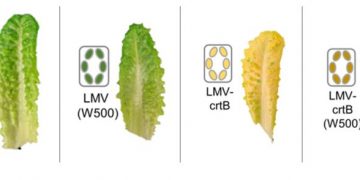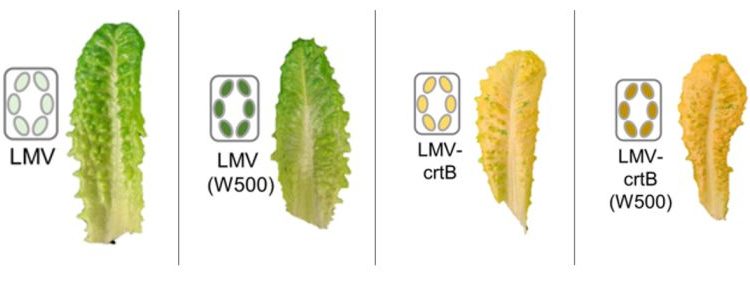Enhancing Vitamin A Content in Lettuce Through Innovative Biotechnological Techniques
Researchers have made significant strides in improving the nutritional value of lettuce through the development of “Golden Lettuce,” a biofortified variety rich in vitamin A. This innovative approach focuses on increasing the beta-carotene content of lettuce and other green plant tissues, addressing a critical nutritional need in various populations.
Beta-carotene serves as the primary precursor to vitamin A, an essential nutrient vital for numerous bodily functions, including vision, immune system performance, and cellular growth. The newly developed biotechnological techniques demonstrate how high light intensity treatments can enhance the beta-carotene levels in plant leaves by up to 30 times. This process creates new storage sites for beta-carotene without disrupting crucial functions like photosynthesis, ensuring that the plant’s overall health and productivity remain intact.
The introduction of Golden Lettuce not only elevates the nutritional profile of this commonly consumed vegetable but also provides a solution to combat vitamin A deficiencies, particularly in populations with limited access to diverse and nutrient-rich diets. By significantly boosting the vitamin A content, Golden Lettuce represents an important advancement in agricultural biotechnology, catering to the growing demand for healthy and fortified food options.
Furthermore, the biofortification process gives Golden Lettuce its distinct golden hue, making it visually appealing and enhancing its marketability. For vegetable growers, this presents an opportunity to diversify product offerings and attract health-conscious consumers looking for nutritious options.
As vegetable entrepreneurs and agronomists explore new avenues for growth and sustainability, the introduction of biofortified crops like Golden Lettuce aligns perfectly with contemporary trends in the food industry. The potential benefits extend beyond improved health outcomes; they also promise to create new economic opportunities for farmers, producers of fertilizers and plant protection products, and food industry specialists.
In conclusion, Golden Lettuce stands as a testament to the innovative capabilities within agricultural science. Its ability to address nutrient deficiencies while maintaining the integrity of the crop makes it an exciting development for stakeholders across the vegetable supply chain.


































